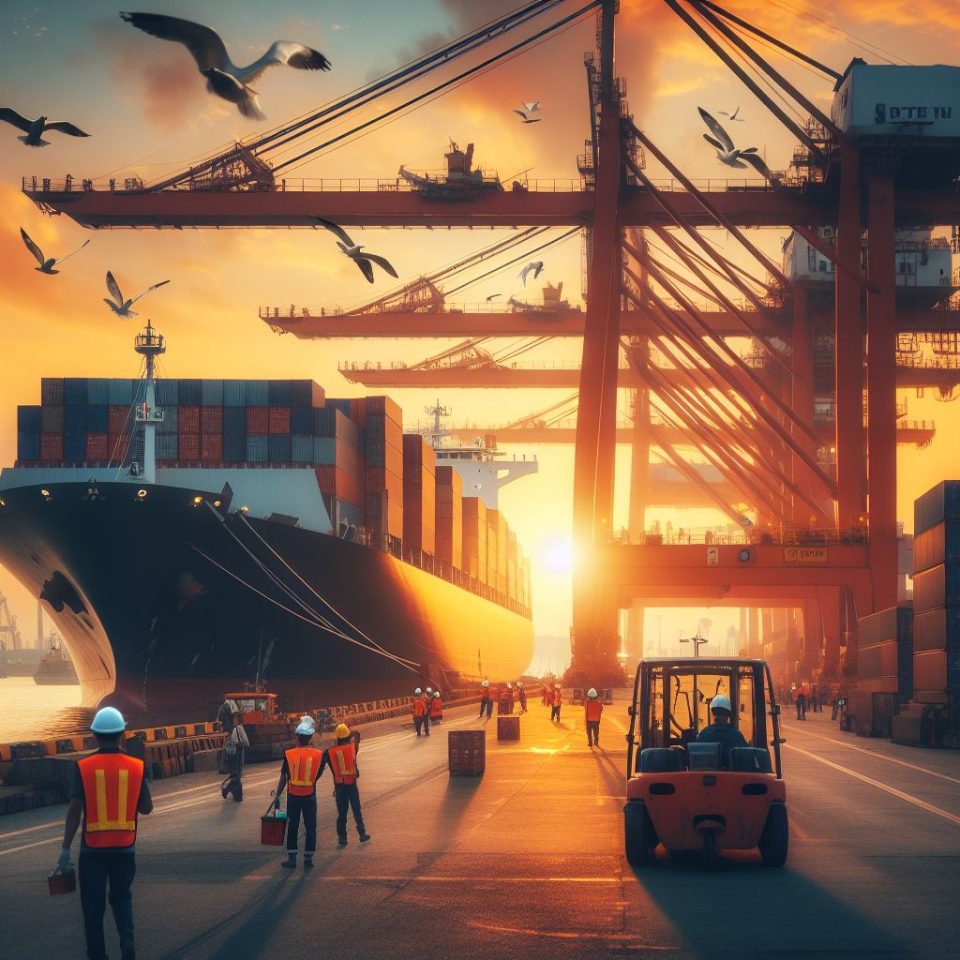The recent collapse of the Key Bridge in Baltimore has wreaked havoc on the operations of the Port of Baltimore, with dire implications for the local economy and supply chains across the US East Coast.
Baltimore Bridge Collapse Halts Port Operations
The collapse occurred when the container vessel Dali collided with one of the bridge’s supports, leading to the indefinite suspension of vessel traffic at the Port of Baltimore. While truck operations at the terminals continue, the bridge collapse has significantly disrupted maritime activities.
Baltimore Bridge Collapse Impact on Port Operations and Supply Chains
The closure of the Port of Baltimore has far-reaching consequences for various industries. Baltimore, being a major hub for vehicles, containers, and commodities, plays a critical role in supply chains. With vessels unable to dock, cargo destined for Baltimore is being redirected to nearby ports, leading to potential delays in deliveries.
Economic Ramifications and Supply Chain Disruptions
The sudden closure of the port has disrupted logistics activities along the East Coast, leading to potential traffic congestion and delays in the Interstate 95 corridor. Rerouting cargo to alternative ports such as Philadelphia and Norfolk could result in increased trucking and rail prices, further exacerbating shipping congestion.
Government Response and Rebuilding Efforts
The federal government, led by President Joe Biden, has pledged assistance to expedite the reopening of the port. However, the timeline for restoration remains uncertain. While the rebuilding process for the Key Bridge is expected to be lengthy, efforts to clear debris and restore navigational pathways are underway to facilitate the port’s reopening.
Economic Stimulus Amidst Rebuilding
Despite the immediate disruptions, the rebuilding efforts following the bridge collapse are anticipated to stimulate economic activity in Baltimore. Investments in infrastructure reconstruction and restoration projects are expected to provide a boost to the local economy, albeit in the long term.
Baltimore Bridge Collapse: Industry Responses and Contingency Plans
Various industries reliant on the Port of Baltimore, including automotive manufacturers and cruise operators, are implementing contingency plans to mitigate the impact of the port closure on their operations due to the bridge collapse. While temporary losses are anticipated, companies are strategizing to navigate the challenges posed by the disruption.
Carnival’s Warning and Operational Changes
Cruise operator Carnival (CCL) issued a cautionary statement regarding the potential financial impact of the Francis Scott Key Bridge collapse in Baltimore. The company anticipates a significant impact on its bottom line for the year 2024, estimating losses of up to $10 million in adjusted EBITDA and adjusted net income. As a response, Carnival has decided to temporarily relocate its operations from Baltimore to Norfolk, Virginia, affecting scheduled voyages, including the rerouting of the Carnival Legend.
Disruptions and Rerouting Challenges
The bridge collapse has triggered a series of reroutes and logistical challenges as vessel traffic into and out of the Port of Baltimore remains suspended. With over 800 containers bound for Baltimore, logistics firms and ocean carriers are grappling with the task of redirecting shipments to alternative ports. Flexport CEO Ryan Petersen highlighted the complexities involved in rerouting cargo, emphasizing the scramble to accommodate customer needs amidst the disruption caused by the bridge collapse.
Capacity Concerns and Supply Chain Implications
While ports like Norfolk, New York, and Philadelphia possess sufficient capacity to absorb diverted cargo from Baltimore, the sudden influx of volume poses logistical hurdles and potential congestion issues. Petersen underscored the cost implications of rerouting shipments, citing the likelihood of increased transportation expenses. With disruptions already experienced earlier in the year due to attacks on vessels in the Red Sea and congestion near the Panama Canal, the bridge collapse exacerbates existing challenges in maritime transportation, potentially impacting the prices of consumer goods.
The Baltimore Bridge Collapse’s political ramifications are still unfolding. However, it’s clear that this event will have a significant impact on various stakeholders, from local businesses to federal lawmakers.
Conclusion: Navigating Through Uncertainty
The collapse of the Key Bridge has thrust the Port of Baltimore into turmoil, posing challenges for businesses and supply chains. However, concerted efforts by government agencies and industry stakeholders are underway to address the immediate fallout and expedite the restoration of port operations. Amidst the uncertainty, resilience and adaptability remain key in navigating through the disruptions caused by this unforeseen event.

